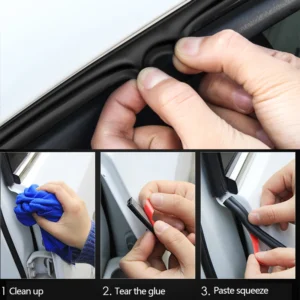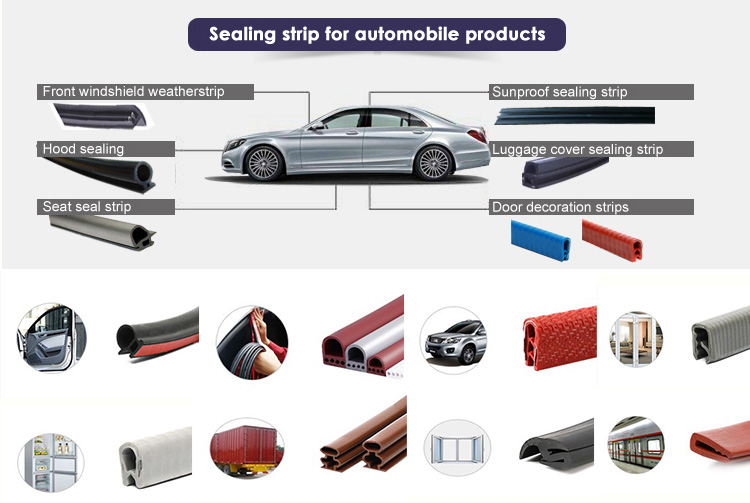These sealing strips play a critical role in sealing gaps and preventing water, dust, noise, and air leaks. Explore the functions, materials, and benefits of automobile rubber sealing strips. Learn how they enhance vehicle aesthetics, improve insulation, and provide a comfortable driving experience.
Functions and Importance of Automobile Rubber Sealing Strips
Automobile rubber sealing strips are designed to perform the following key functions:
- Sealing: They seal the gaps between automotive components, such as doors, windows, trunks, and hoods, preventing water, dust, noise, and air infiltration.
- Insulation: These strips provide thermal and acoustic insulation, reducing heat transfer and noise levels inside the vehicle cabin.
- Aesthetics: Rubber sealing strips enhance the overall appearance of vehicles by covering unsightly gaps and creating a sleek, finished look.
- Protection: They protect the vehicle’s interior and components from external elements, such as rain, wind, UV rays, and debris.
Materials and Types of Automobile Rubber Sealing Strips
Automobile rubber sealing strips are typically made from durable materials such as:
- EPDM (Ethylene Propylene Diene Monomer): EPDM rubber sealing strips are widely used due to their excellent weather resistance, UV resistance, and flexibility.
- PVC (Polyvinyl Chloride): PVC sealing strips offer good resistance to chemicals, oils, and aging, making them suitable for demanding automotive applications.
- Silicone: Silicone rubber sealing strips are known for their high-temperature resistance, flexibility, and electrical insulation properties.
These sealing strips come in various types, including door seals, window seals, weatherstrips, trunk seals, and hood seals, each designed for specific areas of the vehicle.
Benefits and Applications of Automobile Rubber Sealing Strips
Automobile rubber sealing strips provide numerous benefits and find applications in various areas, including:
- Water and Dust Protection: They prevent water and dust from entering the vehicle, ensuring a clean and comfortable driving environment.
- Noise Reduction: Rubber sealing strips effectively reduce external noise, providing a quieter cabin and enhancing the overall driving experience.
- Energy Efficiency: By improving insulation, these strips contribute to better climate control inside the vehicle, reducing the load on heating and cooling systems.
- Safety and Comfort: Sealing strips help maintain proper pressurization inside the cabin, ensuring passenger safety, and providing a comfortable ride.
- Longevity and Reliability: High-quality sealing strips offer durability and resistance to environmental factors, ensuring long-lasting performance and protection.

[Conclusion]
In conclusion, automobile rubber sealing strips are essential components that contribute to vehicle integrity, performance, and aesthetics. They seal gaps, provide insulation, enhance vehicle appearance, and protect against external elements. With their water and dust protection, noise reduction, energy efficiency, and safety features, rubber sealing strips play a vital role in ensuring a comfortable and enjoyable driving experience. Choose high-quality automobile rubber sealing strips to optimize vehicle performance, longevity, and overall customer satisfaction.
